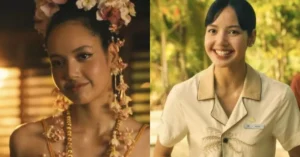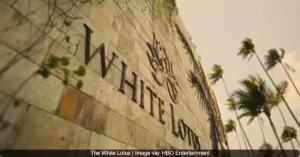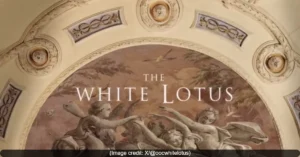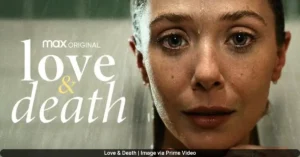The HBO series The White Lotus has become a popular topic of conversation, drawing in millions of viewers with its sharp satire and dramatic storylines. For parents and guardians, this popularity raises an important question: is this award-winning show appropriate for teenagers? The short answer is no. The series is made for adults and contains frequent mature content that is not suitable for younger audiences.
The show carries an official TV-MA rating in the United States, meaning it is specifically designed for mature audiences and may be unsuitable for viewers under 17. Similar mature ratings have been applied in other countries, including 15+ in the United Kingdom, MA15+ in Australia, and R16-18 in New Zealand. The series explores the lives of wealthy guests and the staff at luxurious resorts, with each season featuring a new location and a mysterious death. However, the show’s critical look at class and privilege is packaged with intense adult themes.
Why the Show Has a Mature Rating
The TV-MA rating is due to consistent and graphic adult content across all seasons. The show does not shy away from scenes that are sexually explicit, feature strong drug use, or contain intense language and violence.
Sexual Content and Nudity
The White Lotus features a significant amount of sexual content. This includes:
- Graphic nudity, including full-frontal male nudity and female breast and buttocks nudity.
- Simulated sex scenes that are often explicit, including scenes involving group sex and same-sex couples.
- Sexual themes that are central to the plot, such as prostitution, affairs, and sexual misconduct in the workplace.
- Disturbing themes like implied incestuous interest and voyeurism are also present, particularly in the latest season.
Drug and Alcohol Use
Substance use is a major part of the story for many characters. Depictions include:
- Characters frequently consuming alcohol, often to excess, leading to bad decisions and hangovers.
- Recreational drug use is shown casually and recklessly. This includes characters using cocaine, marijuana, ecstasy, and ketamine.
- Prescription drug abuse is also depicted, with characters misusing medications like Adderall, Xanax, and Klonopin.
- Scenes often show characters on multi-day drug and alcohol benders without portraying significant negative consequences in the moment.
Violence and Disturbing Themes
While not constantly violent, the show contains intense and sometimes disturbing moments:
- Each season begins with the promise of a death, with the story revealing the events that lead to it. This includes dead bodies being discovered.
- Specific violent acts include physical fights, such as men punching each other and holding one another underwater, and gun violence, including scenes of suicide.
- The third season includes graphic dream sequences depicting suicide, which could be highly distressing for viewers affected by this topic.
- Psychological themes like gaslighting, manipulation, and stalking are also woven into the character dynamics.
Strong Language
The dialogue in the series is filled with profanity. Words like “f–k,” “s–t,” “bitch,” “c–t,” and “d–k” are used heavily and frequently throughout all episodes. The language often accompanies graphic discussions about sex and power.
A Look at the Content by Season
The mature content is a constant presence across all seasons of the anthology, though specific themes vary.
Season 1 (Hawaii): This season introduces the format and heavily features drug use, particularly with two teenage girls who vape and use a stash of prescription drugs and ketamine. The hotel manager also spirals into a drug-fueled binge.
Season 2 (Sicily): This season places a stronger emphasis on sexual content. It follows two young women who prostitute themselves at the resort, leading to several explicit sex scenes. The season also includes drug use, such as characters taking “mollys” and the misuse of Viagra.
Season 3 (Thailand): The most recent season continues with graphic nudity and sexual themes, including discussions of sexual kinks and incest. It also introduces heavier suicide themes, showing a character’s suicidal thoughts and dream sequences of suicide, which are portrayed with bloody imagery.
Is It Okay for Older Teens?
Most parental guidance sources agree that The White Lotus is not suitable for children or young teenagers. Common Sense Media, a nonprofit that provides reviews for parents, suggests the show is appropriate for ages 16 and older, but still emphasizes that it is “made for adults” due to its intense content.
The show’s complex satire of wealth and social class requires a level of maturity to understand, and the frequent explicit content is overwhelming for younger viewers. For older teenagers in the 17+ range, parental discretion is strongly advised.
Guidance for Parents
If you are considering the show for an older teen, here are some steps you can take:
- Watch First: Preview episodes yourself to understand the specific content and decide if it aligns with your family’s values and your teen’s maturity level.
- Watch Together: If you permit viewing, consider watching together. This allows you to pause and discuss the mature themes as they come up.
- Start Conversations: Use the show’s themes—such as class privilege, consent, and substance abuse—as a starting point for important conversations about real-world issues.
The White Lotus combines comedy and suspense, with just enough tragedy to keep you guessing who makes it out alive.
The series is designed for adult audiences who can process its graphic and thematic material. For parents wondering if it’s suitable for kids, the clear guidance from ratings and reviews is to keep this one for after the kids have gone to bed.
Also Read: The White Lotus 3: Leslie Bibb Reveals How Honesty Could Have Saved Her Character’s Friendship















